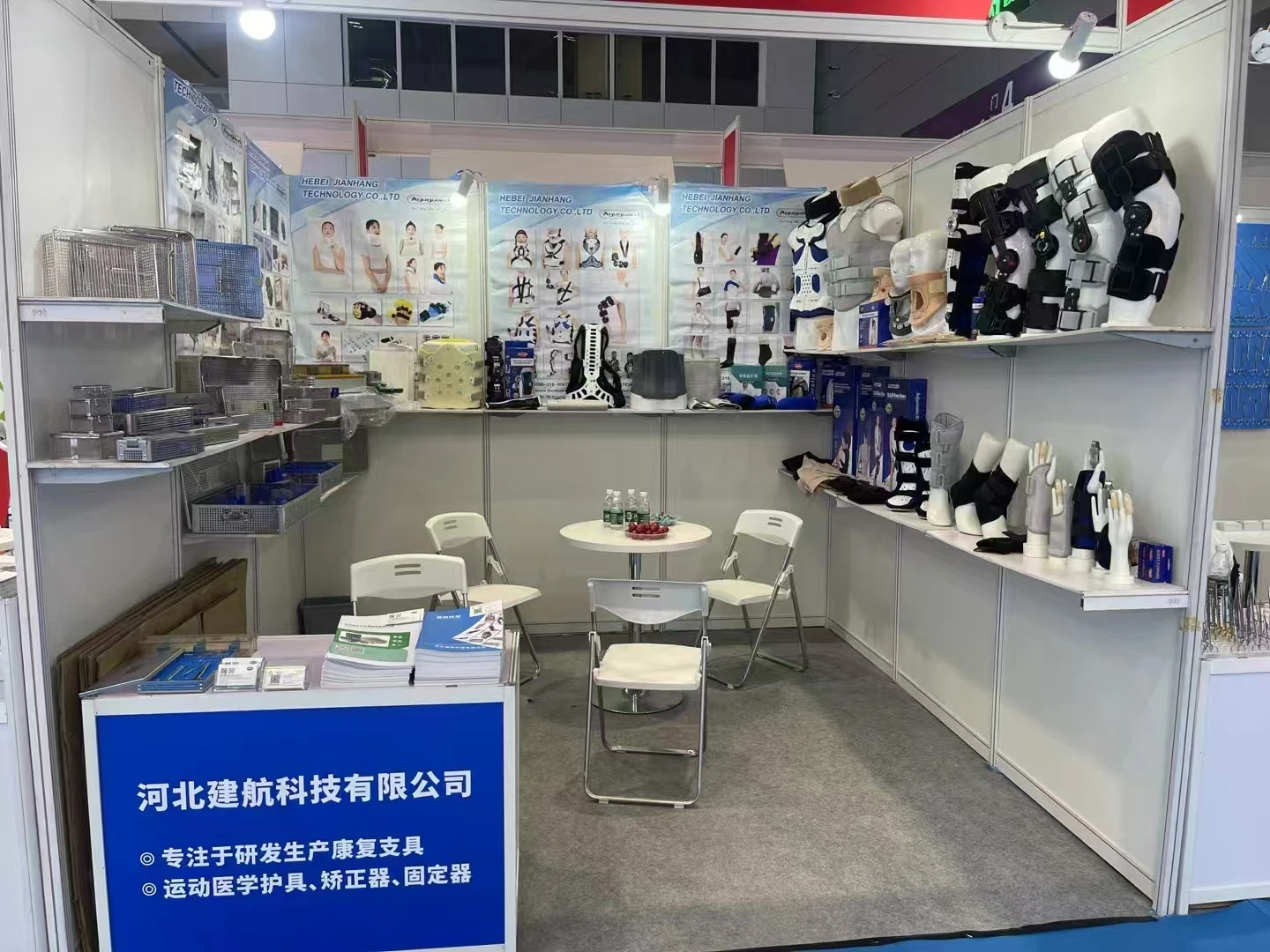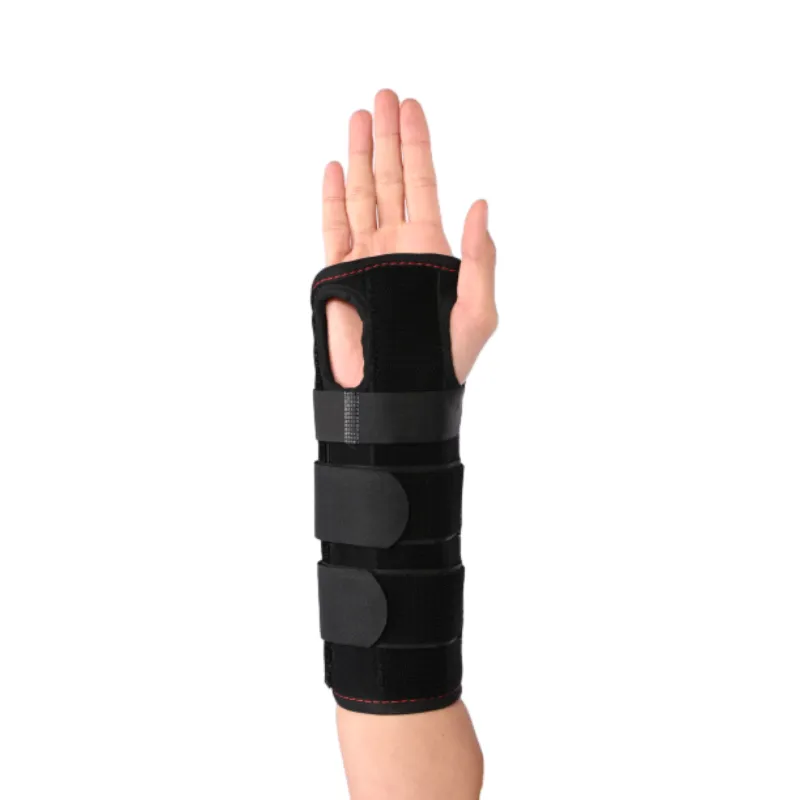ফেব্রু. . 14, 2025 02:45
Back to list
different types of arm slings
When recovering from an arm injury, the type of arm sling you choose can significantly impact your healing process. Selecting the appropriate sling is crucial for proper immobilization, support, and comfort. Here’s a detailed guide on the different types of arm slings, illustrating their unique features, optimal use cases, and benefits to provide you with a clearer understanding of what best suits your needs.
Cuff and collar slings represent a less bulky option ideal for situations where minimal support is necessary. Essentially a strap that supports the wrist and is worn around the neck, this sling offers limited immobilization, making it suitable for minor injuries where full arm support is not mandatory. It serves well in conditions where a lighter, less intrusive support system is preferred, like mild wrist sprains or elbow tweaks. 5. Functional Sling/ Cast Sling The functional sling, often referred to as a cast sling, is tailored for individuals who have a cast and need to ease the weight of the cast by distributing it evenly across the shoulder and neck. It's designed to support the arm at an appropriate angle, reducing discomfort. This type is essential for long-term recovery phases where consistent support aids in preventing postural strain while promoting healing. 6. Ergonomic Slings Ergonomic slings stand out for their specialized design aimed at maximizing comfort and reducing the pressure on the neck and shoulders. Often equipped with cushioned straps and innovative design for even weight distribution, these slings provide a higher degree of comfort for prolonged use. They are ideal for injuries requiring extended immobilization, offering significant relief by enhancing the user's wearing experience through premium materials and design. Choosing the right sling should involve consideration of both medical advice and personal comfort. Consulting with a healthcare professional ensures the selected sling aligns with the specific medical condition, while personal trials aid in identifying the fit that offers the utmost comfort. Proper hygiene and maintenance of the sling are also paramount to effective recovery. Regular cleaning per manufacturer's instructions helps prevent hand dermatitis or skin irritation from extended use. Adjustments should keep the arm comfortably positioned without excessive pressure points. Use the outlined guide to make an informed decision about the type of arm sling that best fits your needs, ensuring appropriate support that enhances recovery. Quality materials, comfort features, and expert recommendations combine to offer a recovery tool that not only aids physical healing but also supports overall well-being during recuperation. This strategic approach ensures the chosen sling is both effective and reliable, contributing positively to the healing journey.


Cuff and collar slings represent a less bulky option ideal for situations where minimal support is necessary. Essentially a strap that supports the wrist and is worn around the neck, this sling offers limited immobilization, making it suitable for minor injuries where full arm support is not mandatory. It serves well in conditions where a lighter, less intrusive support system is preferred, like mild wrist sprains or elbow tweaks. 5. Functional Sling/ Cast Sling The functional sling, often referred to as a cast sling, is tailored for individuals who have a cast and need to ease the weight of the cast by distributing it evenly across the shoulder and neck. It's designed to support the arm at an appropriate angle, reducing discomfort. This type is essential for long-term recovery phases where consistent support aids in preventing postural strain while promoting healing. 6. Ergonomic Slings Ergonomic slings stand out for their specialized design aimed at maximizing comfort and reducing the pressure on the neck and shoulders. Often equipped with cushioned straps and innovative design for even weight distribution, these slings provide a higher degree of comfort for prolonged use. They are ideal for injuries requiring extended immobilization, offering significant relief by enhancing the user's wearing experience through premium materials and design. Choosing the right sling should involve consideration of both medical advice and personal comfort. Consulting with a healthcare professional ensures the selected sling aligns with the specific medical condition, while personal trials aid in identifying the fit that offers the utmost comfort. Proper hygiene and maintenance of the sling are also paramount to effective recovery. Regular cleaning per manufacturer's instructions helps prevent hand dermatitis or skin irritation from extended use. Adjustments should keep the arm comfortably positioned without excessive pressure points. Use the outlined guide to make an informed decision about the type of arm sling that best fits your needs, ensuring appropriate support that enhances recovery. Quality materials, comfort features, and expert recommendations combine to offer a recovery tool that not only aids physical healing but also supports overall well-being during recuperation. This strategic approach ensures the chosen sling is both effective and reliable, contributing positively to the healing journey.
Next:
Latest News
-
Hard Cervical Collar-Hebei Jianhang Technology Co., Ltd.|Rigid Neck Support&Adjustable FitNews Jul.23,2025
-
Hard Cervical Collar-Hebei Jianhang Technology Co.,Ltd.|Neck Support&Injury RecoveryNews Jul.21,2025
-
Hard Cervical Collar-Hebei Jianhang Technology Co.,Ltd.|Neck Support&Injury RecoveryNews Jul.21,2025
-
Hard Cervical Collar-Hebei Jianhang Technology Co.,Ltd.|Neck Support&Injury RecoveryNews Jul.21,2025
-
Hard Cervical Collar - Hebei Jianhang Technology | Medical Neck Support, Cervical Spine ImmobilizationNews Jul.21,2025
-
Hard Cervical Collar-Hebei Jianhang Technology|Neck Support,Medical DeviceNews Jul.21,2025
Have a question? Keep in touch.





















